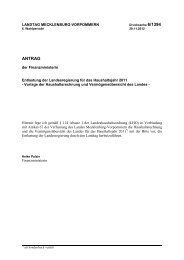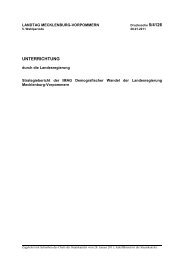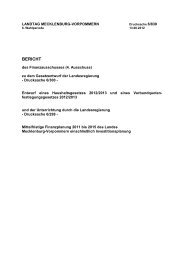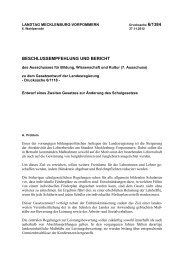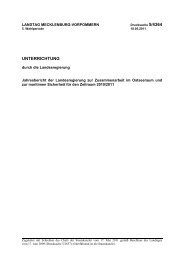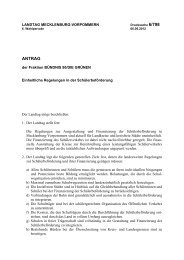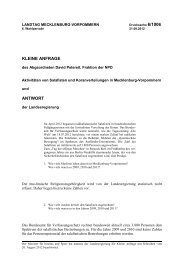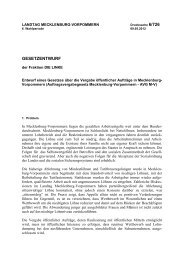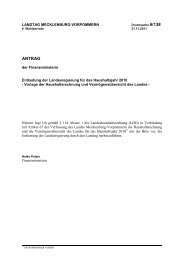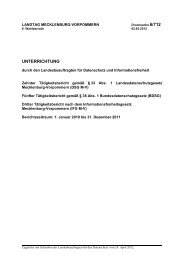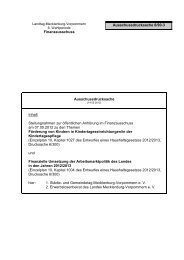Baltic Rim Economies - Baltic Port List
Baltic Rim Economies - Baltic Port List
Baltic Rim Economies - Baltic Port List
Create successful ePaper yourself
Turn your PDF publications into a flip-book with our unique Google optimized e-Paper software.
Expert article 887 <strong>Baltic</strong> <strong>Rim</strong> <strong>Economies</strong>, 21.12.2011 Quarterly Review 5�2011<br />
Biocenter Finland – a novel way to restructure national research<br />
infrastructures<br />
By Eero Vuorio<br />
Biocenter Finland (BF) was established in 2006 as a joint<br />
effort of six biocenters operated by six Finnish Universities<br />
(Helsinki, Kuopio, Oulu, Tampere and Turku, and the Abo<br />
Akademi University) to restructure and develop research<br />
infrastructures and technology services for the entire<br />
scientific community of the country, but particularly for the<br />
more than 2000 life scientists working in the partner<br />
biocenters. The aim was to combine local expertise into a<br />
nation-wide knowledge base to advance biosciences and<br />
biomedicine in a coordinated fashion through investments<br />
into newest equipment, technologies and services. Four<br />
years later also the Institute for Molecular Medicine Finland<br />
(FIMM), previously an associated member, became a full<br />
member of BF. A real boost for BF came in 2009 when the<br />
Ministry of Education and Culture provided 45 million € for<br />
to be distributed over a three year period (2010-2012) to<br />
research infrastructures and their technology services in<br />
nine areas: bioinformatics; biological imaging; genomewide<br />
methods; model organisms; proteomics and<br />
metabolomics; stem cells and biomaterials; structural<br />
biology and biophysics; translational research technologies;<br />
and viral gene transfer and cell therapy.<br />
The basic principles of BF are to create networks of<br />
infrastructure service providers, and to support purchase of<br />
equipment and hiring of technical staff to operate the topof-the-line<br />
equipment in one location providing services to<br />
everyone. The infrastructure networks were invited to make<br />
proposals for provision of nationwide services, which were<br />
subsequently evaluated by a high-level panel of<br />
international experts. A small fraction of the funds were<br />
allocated to support emerging technologies, and to promote<br />
international researcher training, research career<br />
development and recruitment of international expertise for<br />
key technology areas. Within EU such a concept is unique<br />
for restructuring and developing research infrastructures<br />
and technology services at national level.<br />
Two generations of restructuring of life science<br />
infrastructures in Finland<br />
The BF concept outlined above represents the second<br />
generation of restructuring of life science infrastructures<br />
and technology services in Finland. During the 1990s<br />
Universities with strong research communities in biological<br />
and medical sciences established biocenters. Financial<br />
support from the Ministry of Education, local Universities<br />
and other sources made it possible to erect new buildings<br />
to house research groups representing different areas of<br />
life science research in academia and industry. Joint<br />
purchase of equipment and establishment of core facilities<br />
marked the first generation of restructuring of research<br />
infrastructures and services. This provided researchers in<br />
biocenters with an unforeseen access to modern research<br />
technologies. The biocenter concept rapidly demonstrated<br />
its strengths also by facilitating joint seminars, training<br />
courses and collaborative research projects, and by<br />
establishing doctoral training programs.<br />
By the time we entered the 21st century,<br />
unprecedented technological development had not only<br />
improved the performance of high-throughput analysis<br />
platforms but also made top-of-the-line equipment so<br />
41<br />
expensive and powerful that it became both unreasonable<br />
and impractical for individual biocenters to make such<br />
investments alone. Time was ripe for the second<br />
generation restructuring of Finnish biocenters, i.e. the<br />
establishment of BF in 2006. The biocenters organized<br />
their infrastructures and services into national networks<br />
with an aim to better support high-level research in<br />
participating institutions by integrating the services<br />
available and by agreeing on division of tasks according to<br />
available expertise and resources. This has led to gradual<br />
development of specific expertise profiles for Finnish<br />
biocenters. No two biocenters are alike in terms of size,<br />
scientific orientation, organization or mode of operation.<br />
After nearly two years of operation it is fair to say that<br />
all signs indicate that the BF concept has been a success.<br />
This message comes directly from the international<br />
Scientific Advisory Board and from the host universities of<br />
the biocenters. User statistics demonstrate that all<br />
biocenters now offer services using updated equipment not<br />
only for their own researchers but for those working in other<br />
biocenters and elsewhere in academia and industry.<br />
BF networks are in place to form a bridge to European<br />
research infrastructures<br />
Development of the BF concept coincided with the<br />
coordination of European research infrastructures through<br />
the ESFRI (European Strategy Forum for Research<br />
Infrastructures) process, one of the most exciting concrete<br />
science policy initiatives in Europe during the past ten<br />
years. ESFRI was established in April 2002 to produce a<br />
“European Roadmap on Research Infrastructures”<br />
reflecting a common mid- to long-term strategy for the<br />
European Union. The first roadmap was published in 2006,<br />
and updates in 2008 and 2010. A typical feature of most<br />
BMS research infrastructures is their distribution into<br />
different operational sites (National Nodes) through several<br />
Member States. The BF infrastructure networks and<br />
technology platforms provide ready-made national<br />
structures for Finnish scientists to participate in and benefit<br />
from the ESFRI initiatives. Active participation in the pan-<br />
European infrastructures has made it possible for Finnish<br />
scientists, often together with their Nordic/<strong>Baltic</strong> colleagues,<br />
to influence the European planning process and bring<br />
forward the expertise and needs of the Nordic research<br />
community. Some of the BF technology platforms are now<br />
getting ready to serve also international ESFRI customers<br />
and thereby bring Finland an increasingly important partner<br />
in the European Research Area (ERA).<br />
Eero Vuorio<br />
Professor, Director<br />
Biocenter Finland<br />
Finland<br />
� Pan-European Institute � To receive a free copy please register at www.tse.fi/pei �



